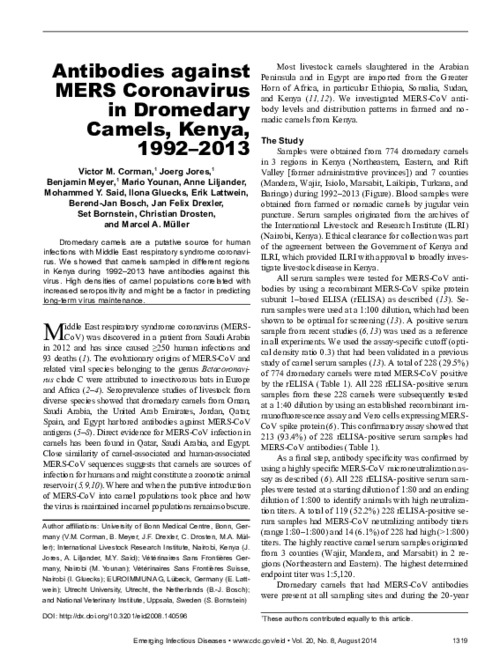Antibodies against MERS Coronavirus in Dromedary Camels, Kenya, 1992–2013
Abstract
Middle East respiratory syndrome coronavirus (MERSCoV)
was discovered in a patient from Saudi Arabia
in 2012 and has since caused ≥250 human infections and
93 deaths (1). The evolutionary origins of MERS-CoV and
related viral species belonging to the genus Betacoronavirus
clade C were attributed to insectivorous bats in Europe
and Africa (2–4). Seroprevalence studies of livestock from
diverse species showed that dromedary camels from Oman,
Saudi Arabia, the United Arab Emirates, Jordan, Qatar,
Spain, and Egypt harbored antibodies against MERS-CoV
antigens (5–8). Direct evidence for MERS-CoV infection in
camels has been found in Qatar, Saudi Arabia, and Egypt.
Close similarity of camel-associated and human-associated
MERS-CoV sequences suggests that camels are sources of
infection for humans and might constitute a zoonotic animal
reservoir (5,9,10). Where and when the putative introduction
of MERS-CoV into camel populations took place and how
the virus is maintained in camel populations remains obscure Most livestock camels slaughtered in the Arabian
Peninsula and in Egypt are imported from the Greater
Horn of Africa, in particular Ethiopia, Somalia, Sudan,
and Kenya (11,12). We investigated MERS-CoV antibody
levels and distribution patterns in farmed and nomadic
camels from Kenya

